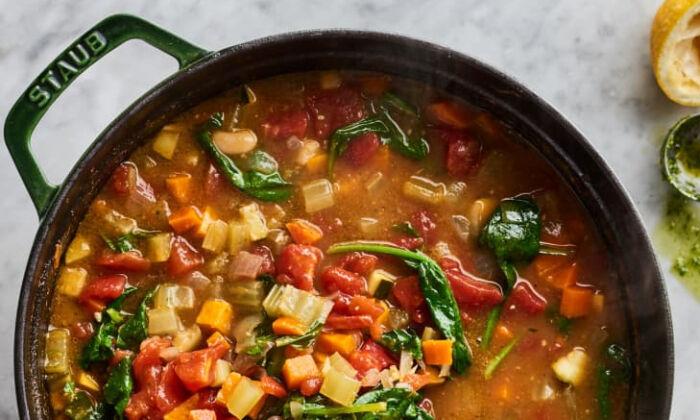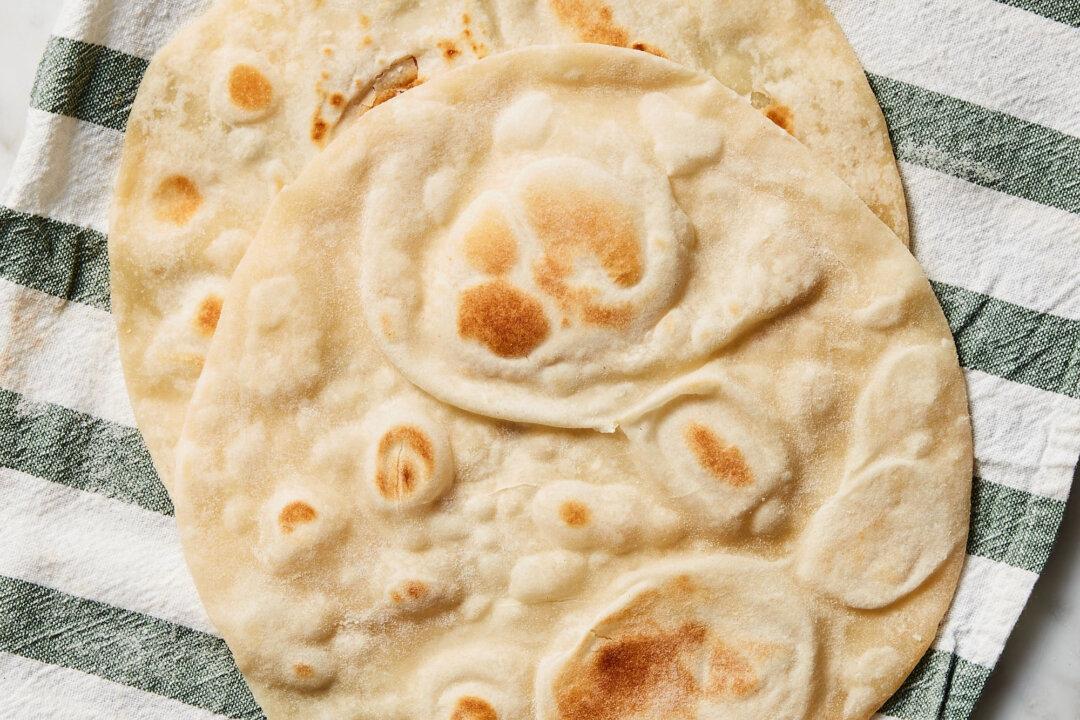Soup is easy to make and even easier to enjoy, but it’s simply not the kind of dish you make for one. When you make soup, you make a lot—perhaps that’s why large pots are often called soup pots! Fortunately, soup is ideal for freezing and serving later, which means you can stir up a big batch and then eat it for weeks or even months to come.
But what’s the best way to freeze soup and how long will it last? Read on for everything you need to know, including which containers to use, how to thaw frozen soup, and which soups freeze better than others.
Which Soups Are Best for Freezing?
All soup can be frozen, but brothy soups, puréed soups, and soups packed with hearty vegetables and proteins (think: lentil, minestrone, or French onion) freeze better than those made with milk, cream, pasta, or grains. You can still freeze your favorite chicken noodle or cream of asparagus, but you’ll want to make a few freezer-friendly adjustments.
No matter what kind of soup you are making and freezing, if it has a garnish—be it croutons, grated cheese, or fresh herbs—wait to add that until you’re ready to serve.
What’s the Best Container for Freezing Soup?
The ideal container for freezing soup depends on how you plan to eat it later, your freezer space, and what you have on hand. If space is an issue or you like to freeze individual servings, airtight freezer bags are a great option.
Put your soup in the bag, squeeze out as much air as possible, and seal it tight. Next, find a way to freeze the bag flat. This could mean laying it on the “floor” of your freezer or placing it on a baking sheet or in a plastic container and putting that in the freezer. Once the soup is frozen into a compact square or rectangle, it can be stacked in the freezer or arranged like books on a shelf.
Be sure to use high-quality freezer bags, which are thicker and sturdier than your average sandwich bag. If you are still nervous about leaks, leave the soup on the baking sheet or in the plastic container—a setup that works particularly well if you keep a bunch of soup in the freezer.
If you prefer not to use plastic bags or are freezing a larger quantity of soup, use freezer-safe glass or plastic containers. Although they can be bulky, containers come in a wide range of shapes and sizes to suit the portions you’re after and the dimensions of your freezer. There are also great options like reusable freezer bags and blocks like Souper Cubes.
What’s the Best Way to Freeze Soup?
Once you’ve made your soup, always let it cool completely. It might be tempting to skip this step, but it lowers the risk for foodborne illness and helps prevent freezer burn. Plus, putting hot soup in the freezer can thaw the food that is already in there.
To speed the cooling process, place the hot soup pot in an ice bath and stir it often to lower the temperature. Alternatively, divide your soup into smaller portions for faster cooling—you can even use the containers you plan to freeze it in.
If you haven’t already moved your soup to its freezer-friendly bag or container, now’s the time to do so. A measuring cup or ladle makes easy work of this step. For convenience, divide soup into portions you will use, whether that means individual servings to take to lunch, three servings to enjoy over the course of a few evenings, or a larger amount to serve your family or feed the neighborhood kids after a day of sledding.
Remember that liquid expands when frozen, so leave a bit of extra space in the bag or container. If using a glass or plastic container, you can lay a sheet of plastic wrap on top of the soup as an added layer of protection against freezer burn.
Before your soup goes in the freezer, always, always label it. In addition to writing the name of the soup, include the number of servings and either the date it was frozen or the date it should be eaten by. We all have our preferred system, but clear labeling will save you a headache down the line and will mean that your partner, your babysitter, or even your teen can easily enjoy that soup you took the time to make and freeze.
How Long Can Soup Be Frozen?
Soup is a very, very broad category, so how long you can freeze an individual recipe will vary. However, if frozen properly, most soups will stay fresh for at least three months.
What’s the Best Way to Thaw and Reheat Frozen Soup?
As with most frozen food, the best way to thaw soup is in the refrigerator. Soup frozen flat in bags is thin and will defrost quickly. Place it on a plate or in a bowl just in case the bag has a hole or leaks. To speed things up, put the bag in a water bath.
Soup frozen in plastic or glass containers can also be thawed in the refrigerator or a water bath, as well as in the microwave, as long as the container is microwave-safe.
If thawing in the microwave, you can also heat the soup up that way. Alternatively, warm the soup in a saucepan. If your defrosted soup lacks liquid, gradually add broth or water, about half a cup at a time, until it’s as soupy as you desire.
Freezing can flatten flavors, so be sure to check your soup for seasoning. And if you held back a garnish, add it now!
What’s a Trick for Freezing Soup With Dairy?
Soups enriched with milk, cream, or cheese are rich and satisfying, but freezing and reheating dairy can cause it to separate and turn grainy. The good news is that most recipes have you add dairy near the end, so you can simply make your soup up to that step and wait to add the milk, cream, or cheese until you’ve thawed, reheated, and are ready to serve.
Here’s a hot tip: When labeling your soup for the freezer, note how much dairy to add, so you’re not scrambling to find the recipe while the soup is bubbling away on the stove.
What’s the Secret to Freezing Soup With Pasta or Grains?
Whether it’s chicken noodle, chicken and rice, mushroom and barley, udon, or pho, there are a lot of soups made with pasta, rice, or a grain of some kind. Those starches make soup heartier and more satisfying, but they also soak up a lot of liquid, which can make them fall apart, as well as create an overall less soupy soup.
But there’s an easy fix: Leave out any pasta or grain until you thaw and reheat your soup. As with dairy, do yourself a favor and add a note when you label the soup. Cook the pasta or grain separately and add it to your soup when ready to serve.
With these easy tips, you are ready to make and freeze pot after pot of soup. All that’s left is to pick a soup recipe—or several!
Freezing the Soup
1. Prepare soup according to recipe directions, omitting any dairy, pasta, grains, fresh herbs, or garnishes.
2. Allow soup to cool completely. To speed the cooling process, place the hot soup pot in an ice bath and stir it often to lower the temperature. Alternatively, divide your soup into smaller portions for faster cooling—you can even use the containers you plan to freeze it in.
3. If you haven’t already done so, transfer the soup to freezer bags or freezer-safe plastic or glass containers. If using freezer bags, put your soup in the bag, squeeze out as much air as possible, and seal it tight.
4. Label the soup with the name of the soup, the number of servings, and either the date it was frozen or the date it should be eaten by. It’s also helpful to note any ingredients that need to be added when reheating the soup.
5. Transfer the soup to the freezer If using bags, freeze the bags flat by laying them on the floor of your freezer, on a baking sheet, or in a plastic container in the freezer. Once the soup is frozen into a compact square or rectangle, it can be stacked in the freezer or arranged like books on a shelf.
Thawing and Reheating the Soup
1. The best way to thaw soup is in the refrigerator. Place it on a plate or in a bowl just in case the bag has a hole or leaks. To speed things up, put the bag in a water bath. Soup frozen in plastic or glass containers can also be thawed in the refrigerator or a water bath, as well as in the microwave, as long as the container is microwave safe.
2. Soup can be reheated in the microwave or on the stovetop. If the soup is too thick, add broth or water about a half cup at a time until it reaches the desired consistency. When reheating, add any ingredients, such as dairy or pasta, that were omitted when freezing.
3. Garnish and serve.
Lauren Salkeld is a contributor to TheKitchn.com, a nationally known blog for people who love food and home cooking. Submit any comments or questions to [email protected].
©2022 Apartment Therapy. Distributed by Tribune Content Agency, LLC.





